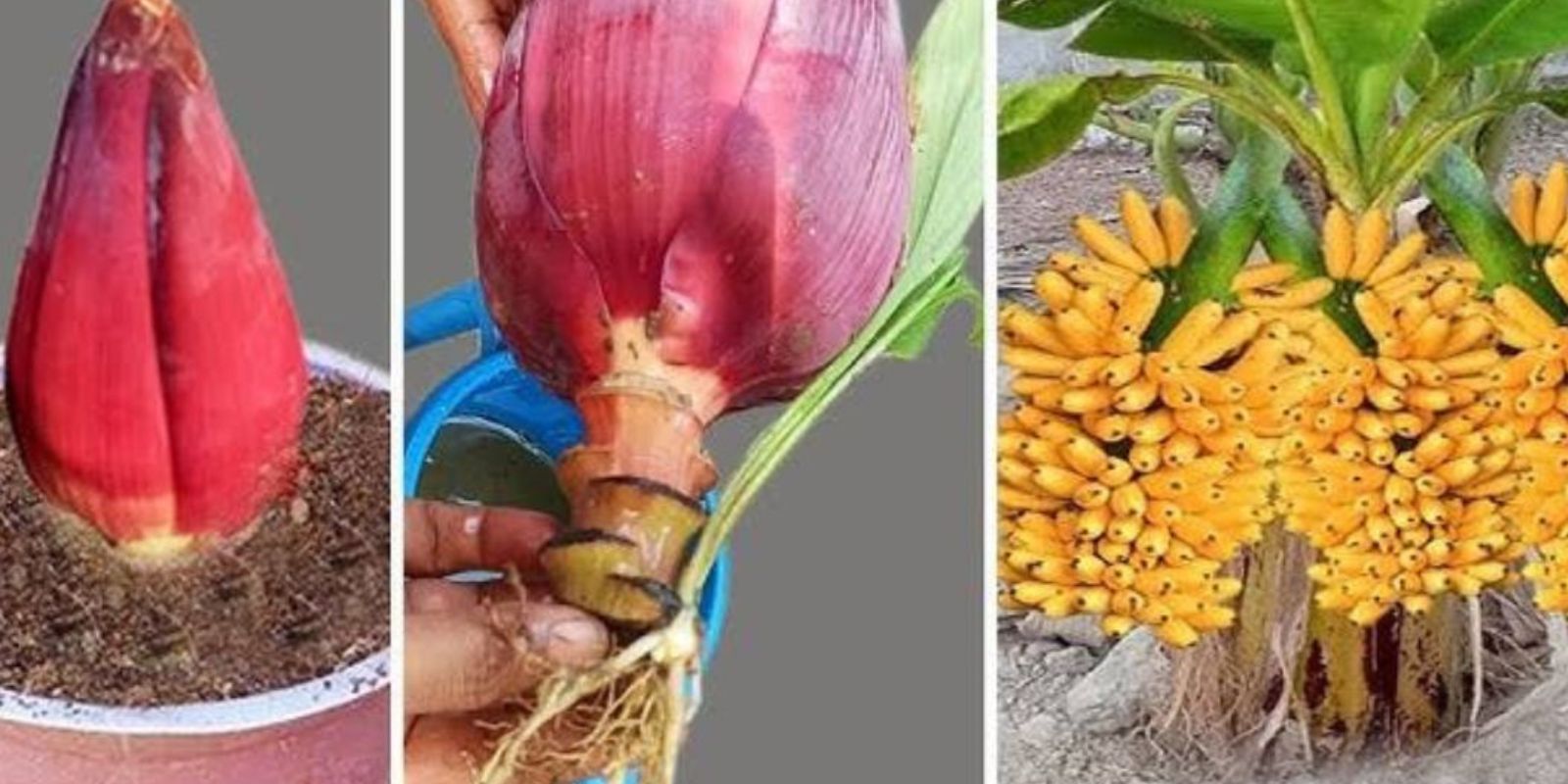Cultivating a banana tree from a banana flower is not only a rewarding gardening experience but also a unique way to connect with nature. This method allows you to watch the fascinating transformation of a single banana flower into a thriving tree that can eventually bear fruit. Whether you are a seasoned gardener or a curious beginner, this guide will walk you through every step to help you succeed in growing your own banana tree at home.
Why Grow a Banana Tree from a Banana Flower?
Growing a banana tree from a flower is a sustainable and rewarding process for several reasons:
- Control Over Growth: You can monitor and manage the plant’s growth from its earliest stages.
- Ensure Plant Health: Starting with a healthy banana flower ensures your tree develops robustly.
- Personal Fulfillment: Watching the flower transform into a tree and eventually produce fruit is an incredibly satisfying journey.
This innovative gardening technique is also a great way to learn about plant propagation while enjoying the beauty and functionality of banana plants.
Materials You’ll Need
- A healthy banana flower
- A pot with drainage holes
- Rich, well-draining potting soil
- Rooting hormone (optional)
- Water
- A clear plastic bag or a mini greenhouse setup
- Bright, indirect light source
Step-by-Step Guide to Growing a Banana Tree from a Flower
1. Select a Healthy Banana Flower
Choose a banana flower that is healthy, vibrant, and free from any visible diseases or damage. The health of the flower is crucial for successful propagation.
2. Prepare the Pot
Fill a medium-sized pot with rich, well-draining potting soil. A pot with drainage holes is essential to prevent waterlogging, which can harm the roots.
3. Treat the Flower Base (Optional)
For better results, dip the base of the banana flower in rooting hormone. This step isn’t mandatory but can significantly enhance root development.
4. Plant the Banana Flower
Make a hole in the soil and insert the base of the flower firmly. Ensure the flower is stable and that the base is completely covered with soil.
5. Water the Soil
Water the soil thoroughly but avoid making it soggy. The soil should be consistently moist to support root development.
6. Create a Humid Environment
Place a clear plastic bag over the pot or use a mini greenhouse to retain humidity. Banana flowers thrive in humid conditions, so maintaining moisture is key during the initial growth phase.
7. Provide Bright, Indirect Light
Position the pot in a spot that receives bright, indirect sunlight. Avoid placing it in direct sunlight, as this can scorch the plant.
8. Monitor and Maintain Moisture
Check the soil regularly to ensure it remains moist but not waterlogged. Water as needed and occasionally lift the plastic covering to allow for airflow and prevent mold growth.
9. Transplanting to a Larger Pot or Garden
Once the roots have developed and new growth appears, it’s time to transplant the plant. Choose a larger pot or a spot in your garden with well-draining soil. Ensure the location gets partial shade to full sun.
10. Continue Care and Maintenance
Water your banana tree regularly, keeping the soil moist but not soggy. Apply a balanced fertilizer occasionally to encourage healthy growth. Protect the plant from strong winds, as banana trees are prone to damage.
Tips for Growing a Healthy Banana Tree
- Maintain Consistent Humidity: Keep the environment humid, especially during the early stages of growth.
- Avoid Overwatering: While banana trees love moisture, too much water can lead to root rot.
- Provide Proper Light: Ensure the plant gets bright, indirect light initially, transitioning to more direct sunlight as it matures.
- Gradual Acclimation: If you’re moving the plant outdoors, acclimate it slowly to prevent shock.
The Transformation Journey
Watching your banana flower grow into a tree is a remarkable process. The plant will first focus on root development, followed by the emergence of green shoots. Over time, the shoots will grow into the sturdy trunk and lush leaves characteristic of banana trees.
Once your tree matures, you’ll be rewarded with clusters of bananas. The entire process, from planting to fruiting, can take 9-12 months depending on the growing conditions and care provided.
Benefits of Growing Banana Trees
- Aesthetic Appeal: Banana trees add a tropical touch to your garden or indoor space.
- Delicious Fruit: Homegrown bananas are fresher and tastier than store-bought ones.
- Sustainability: Growing your own bananas reduces your reliance on commercial produce, cutting down on transportation and packaging waste.
- Learning Opportunity: This project teaches you about plant growth and propagation techniques.
Common Issues and How to Solve Them
- Yellowing Leaves: This can be a sign of overwatering or nutrient deficiency. Adjust your watering schedule and consider adding fertilizer.
- Slow Growth: Lack of sunlight or poor soil quality can hinder growth. Ensure the plant gets enough light and use nutrient-rich soil.
- Pest Problems: Watch for common pests like aphids or spider mites. Use organic pest control methods to keep them at bay.
Why This Method is Unique
Growing a banana tree from a flower is not just about cultivating a plant; it’s about exploring a fascinating propagation method that many gardeners are unfamiliar with. This approach emphasizes sustainability, creativity, and hands-on learning.
Get Started Today
Cultivating a banana tree from a flower is an exciting and rewarding experience that combines innovation with the joy of gardening. Whether you’re growing it in your garden or a pot indoors, this method is sure to spark curiosity and admiration.
Take the first step today and start your banana-growing adventure! Don’t forget to share your progress and success stories with us.
#BananaTreeChallenge #GrowYourOwnBananas #SustainableGardening #TropicalGardening #HomegrownHappiness

